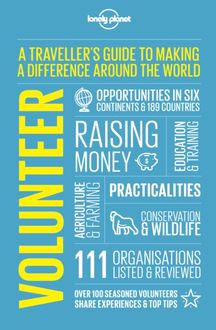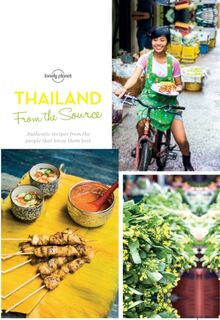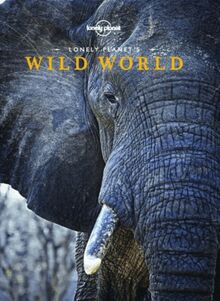Lonely Planet's Wild World , livre ebook
220
pages
English
Ebooks
2015
Vous pourrez modifier la taille du texte de cet ouvrage
Obtenez un accès à la bibliothèque pour le consulter en ligne En savoir plus
Découvre YouScribe en t'inscrivant gratuitement
Découvre YouScribe en t'inscrivant gratuitement
220
pages
English
Ebooks
2015
Vous pourrez modifier la taille du texte de cet ouvrage
Obtenez un accès à la bibliothèque pour le consulter en ligne En savoir plus
Publié par
Date de parution
01 octobre 2015
Nombre de lectures
3
EAN13
9781743609835
Langue
English
Poids de l'ouvrage
14 Mo
Publié par
Date de parution
01 octobre 2015
Nombre de lectures
3
EAN13
9781743609835
Langue
English
Poids de l'ouvrage
14 Mo
Puffin in a snowstorm.
Norway
Jan Vermeer | Getty Images
AFRICA
EUROPE
ASIA
AUSTRALASIA
ANTARCTICA
SOUTH AMERICA
NORTH AMERICA
IT’S A
WILD WORLD
What do you feel when you stand somewhere breathtakingly wild? Or as a tropical thunderstorm crashes cataclysmically overheard or when a heavy wave smashes on a remote shore? For many, it’s a combination of peacefulness and exhilaration. England’s Romantic poets described these natural experiences, those that inspired awe, reverence and an almost transcendental emotional response, as ‘the sublime’. They sought these reveries, often alone, walking in England’s Lake District and beyond, in Europe’s alpine regions.
This book is intended to share some of every continents’ most sublime corners, from the Arctic’s tundra to the great deserts of central Asia, from the world’s largest cave to its wind-whipped mountain peaks. We’ll meet some of the planet’s quirkier residents and be immersed in its most extraordinary natural phenomena.
Scientific studies repeatedly show that being in nature decreases stress. We feel mentally invigorated, spiritually connected, and more optimistic in the wild. Indeed, if we don’t get outdoors enough we may even suffer from ‘nature deficit disorder’, a term coined by author Richard Louv. These photographs will take you to wonderful places, far and wide, and inspire new journeys off the beaten track.
Curating this book, it was clear that humans have left their mark on almost every inch of the globe, from the rainforests of South America and Africa to the oceans’ reefs. But, despite all the changes we have wrought upon it, our home still has the power to evoke awe, respect, passion and protectiveness, to comfort and thrill us, to change our lives. Billions of years after it was forged, it’s still a wild world.
Chugach Mountains.
Alaska, USA
Michael Heffernan
AFRICA
Chobe National Park, Botswana
During the dry season, 50,000 Kalahari elephants occupy the Chobe and Linyanti river areas, before migrating 200km to the park’s southeast in the rains.
Frans Lanting | Getty Images
Namib-Naukluft National Park, Namibia
Africa’s largest game park takes in the Sossusvlei – a vast clay- and salt-pan ringed by massive dunes – parts of Namib Desert and the Naukluft mountains.
Westend61 | Getty Images
Madagascar
Endemic to east Madagascan rainforests, this endangered and large species of lemur is covered in silky fur. It has evolved independently to its mainland African cousins.
Mariusz Kluzniak | Getty Images
South Sudan
A verdant carpet, punctuated by rocky outcrops, covers the plateau around Boma National Park. The grassy floodplains host a large number of animals.
George Steinmetz | Corbis
Begrawiya, Sudan
A rider steers his camel past the ancient Meroe Royal Cemetery, where some 100 pyramids contain the remains of the Meroitic Pharaohs that ruled from 700BC to AD 350.
Niels van Gijn | Getty Images
Makgadikgadi Pans National Park, Botswana
An huge salt flat beyond the Okavango Delta, Makgadikgadi is an important munching ground for migrating zebras.
George Steinmetz | Corbis
Etosha National Park, Namibia
Scattered waterholes in Etosha, a vast parched pan dusted with grassland and thorn scrub, find the park’s 150 mammal species slurping side-by-side.
Wolfgang Kaehler | Getty Images
Sahara Desert, Morocco
A sandstorm hits Merzouga in Erg Chebbi, a 50km-long wave of wind-sculpted dunes. Locals are sometimes buried neck-deep in the sand to ward off rheumatism.
Ladislav Pavliha | Getty Images
Ndop, Cameroon
Beautiful but deadly venomous, the boomslang is a big-eyed viper with fangs at the back of its mouth. The name means ‘tree snake’ in Afrikaans; they’re common in sub-Saharan Africa.
Mattias Klum | Getty Images
Democratic Republic of the Congo
Snaking 4700km through the verdant rainforest of central Africa, the Congo River runs deeper than any other on the planet, reaching down to 220m.
Frans Lanting | Getty Images
Duba Plains, Okavango Delta, Botswana
Relatively new to Southern Africa, the cattle egret provides services for the likes of the buffalo, removing ticks and flies.
Beverly Joubert | Getty Images
Rub’ al-Khali, Oman
Rub’ al-Khali, also known as the Empty Quarter, is the planet’s largest sand desert, spanning Oman, Saudi Arabia, the UAE and Yemen. It was partially mapped by Wilfrid Thesiger.
Malcolm MacGregor | Getty Images
Southern Malawi
Over 900 African elephants call bio-diverse Liwonde home, alongside 2000 hippos and many other mammals, plus some 600 bird species.
Jonathan Gregson
South Africa
Lesser flamingos are the most numerous of six species, and they wade around lakes across Africa. Naturally white, their colouration is from pigments in the organisms they eat.
Hiroya Minakuchi | Getty Images
Cottars Conservancy, Kenya
It’s never wise to get between a lioness and her lunch, as this over-eager colony of corpse cleaners discovers on the killing fields of the Maasai Mara.
Philip Lee Harvey | Getty Images
Democratic Republic of the Congo
In the heart of Virunga National Park, the restless red-hot magma soup cupped in the crater of Nyiragongo Volcano is the world’s largest lava lake.
Ryan Goebel | Getty Images
Namibia
The San people of the Namib Desert and Richtersveld hollow out the tubular branches of this tree. to use as quivers for their arrows – a practise that gives the tree its common name.
Westend61 | Getty Images
Garamba National Park, Democratic Republic of the Congo
Tromping a route through the savannah, African elephants wander across one of the continent’s oldest parks.
David Santiago Garcia | Getty Images
Maasai Mara, Kenya
Rainfall in East Africa prompts the Great Migration, where millions of herd animals move en masse from the Serengeti, across the Mara River in July, to the Maasai Mara’s lusher grass.
Michel Denis Huot | Getty Images
Okavango Delta, Botswana
The endangered African wild dog survives in healthy numbers in the Okavango Delta, a fertile flood plain created by the Okavango River.
Frans Lanting | Getty Images
Democratic Republic of the Congo
Formerly known as the pygmy or dwarf chimpanzee, bonobos are an endangered and little-studied species of great ape that live in the Congo Basin.














